This content is restricted to subscribers
Music is an integral part of the First Touch Program - and high-quality infant massage education generally. The use of nursery rhymes and singing is used to help support parent-infant interaction. Many educators also choose to use recorded music in their sessions - either as background music to help create a relaxed and supportive environment or as part of the activities in parent-baby groups. Recorded music is typically copyrighted material. This means the use of recorded music requires educators to ensure they comply with the relevant copyright laws.
You need to have an active subscription to view this content.
Whether you are teaching infant massage in private practice or in paid employment, at one time or another you will probably want to use materials (such as photographs or writing) that has been produced by someone else, in your promotional activities. Most of these works will be protected by copyright. Any work that you create yourself, will also have copyright protection. Therefore, understanding some of the basic principles of copyright is essential if you are going to be publishing any sort of material – either on your own website, social media or even paper.
You need to have an active subscription to view this content.
Answering this question is the primary goal of infancy: a period in which our view of the world, and our relationship to it, is being shaped.
For the baby, their parents are the beginning and end of their universe.
It is within the subtle, day-to-day interactions between a parent and baby that each of us comes to discover whether the world is, indeed, a friendly place or not.
Course synopsis.
Health, education and human service workers are increasingly interested in how we can best help shape the baby’s universe – their social, emotional, genetic and neurological development – in such a way that fosters the long-term mental health not only of individuals, but of communities.
While the interactions that take place in the parent-baby relationship are simple, often subtle, and sometimes even imperceptible, this does not mean they are inconsequential. From the infant’s perspective, responsive and sensitive touch, voice, movement and eye-contact are the neurological and developmental equivalent to the Big Bang. Studies spanning disciplines of neurobiology, medicine, psychology, sociology and even genetics all pinpoint high-quality parent-infant interactions as being the source of our developmental trajectories.
Despite the surface simplicity of parent-infant interactions – touch, movement, voice and eye-contact – many factors can interfere with a parent’s ability to provide this sort of friendly universe for their babies. This training program provides health workers with a simple, unique and effective tool for supporting these interactions in the practice environment via The First Touch Program.
Learning themes.
This training course consists of four-days face-to-face workshops, followed by a series of take-home activities and assignments. During this course, you will have the opportunity to explore a range of learning themese, including:
1) Rethinking infant massage
There is no question that infant massage is regarded as an enjoyable “soft” activity for parents and babies. Some researchers have also found that infant massage can have an impact on a range of isolated clinical outcomes: such as weight gain and brain activity. However, in general, the potential impact of infant massage education in promoting infant mental health and contributing to “hard” child development outcomes is generally under-estimated and often poorly articulated. Infant massage education is often frequently misunderstood and there are many examples of infant massage interventions being applied without critical reference to the research. Together we explore this history of infant massage in Australia. We then introduce the available research specifically concerned with how infant massage education works, for whom, and under what circumstances. This theme sets the scene for the remainder of the course, by inviting students to think critically about the context and framework of infant massage research and delivery of parent education.
2) Parent-infant interaction: The heart of attachment
A child’s attachment pattern, by definition is not consolidated until the age of around 2 or 3 years – yet the foundations for these patterns are established during the first year of life. How do we support or respond to something that we (and parents) cannot yet see or measure or fully experience? To do this, we must shift our attention from attachment as a goal, and more deeply understand the basic mechanisms of attachment during infancy: touch, eye-contact, facial expression, movement and voice. We begin this session by introducing the key framework of the First Touch Program, based on the work of Vimala McClure. This simple 5-step framework is underpinned by a more complex assumption that attachment arises from the ways in which parents and babies use touch and other interactions to have a “conversation” with each other and, in turn, the shared meanings that parents and babies co-create through this conversation.
This realisation allows us to become un-stuck from our role as an “expert” whose job is to transfer “knowledge” to parents (via books, information, instruction, charts, diagrams, lists) about attachment. It opens up the space between the parent and baby, where we can more easily see and support the relationship as it gives shape to future attachment patterns. We then explore some ways in which this conversation might take place between parents and babies as they come to know each other and give meaning to their relationship. We also begin to consider where we might place ourselves in this space, and how this can influence the interaction between parents and babies and the meanings they create.
3) The authentic conversation
When a worker views secure attachment as their goal, they will naturally tend to focus on what a parent needs to do (or know) in order to “get attachment right”. In contrast, when we think about attachment simply as a future reflection of the parent-infant conversation, our role as facilitator shifts. We become more attuned to the ways that parents and babies “hear” each other…rather than being fixated on our opinion about what they “should be saying” to each other.
In this theme we work through some of the protocols and considerations that the facilitator uses to deliver the First Touch Program. These approaches enable us to support parent and baby in communicating more authentically and, in turn, to nurture the relationship between them.
The sessions within this theme are practical in nature, and provide students with the framework and activities for delivering the First Touch Program. These activities are underpinned by this premise that the role of the facilitator is not to direct the interaction. Rather we look at the activities through the lens of a facilitator who uses themselves and the environment to enable parent and baby to use touch, massage, voice and other interactions in an authentic and personal way to communicate with and “hear” the other.
4) The Baby-As-Teacher
The expression that the “parent is the expert” is frequently used, but we don’t often take the time to articulate what this means, nor to consider the actual pathway to engaging the parent’s expertise. What does parent expertise look like? Is it related to their knowledge? Skill? Intuition? Can the parent still be an expert without relevant knowledge, skill or awareness of their own intuition? How is their “expertise” gained? What do we do when a parent’s expertise conflicts with our professional knowledge about infant development and needs?
To overcome these (and other) difficulties with the parent-as-expert concept we need to consider the parent’s expertise in the broader context of their relationship with their baby. The topics in this theme introduce the idea that the baby plays an active role in the development of their own parent’s expertise.
In the infant massage setting, the idea of parent-as-expert becomes far less problematic the more we can acknowledge and foster the baby’s role as the Teacher. We explore this by examining the ways that babies communicate: through their use of body language, body positions, body movements, eye contact, facial expressions, voice and skin. We explore the link between these expressions and their underlying neurological and emotional states. This session asks students to build their ability to notice these behaviours, and to extend their curiosity about what the baby might be teaching us. This allows us to more directly draw out the infant’s role as the teacher…and the parent as expert…within the infant massage setting.
5) Parent-Baby Classes
These practical sessions provide students with the opportunity to observe and reflect on the delivery of the First Touch Program in relation to key themes explored so far.
Parents and babies join the class-room and participate in a modified/ abbreviated version of the First Touch Program over three days. The parent-baby groups are co-facilitated by the Trainer and the students, so students have the opportunity to practice and observe the program delivery and dynamics in a supported environment.
In these sessions, students are immersed in the real-life, spontaneous dynamics, interactions and communication occurring between the trainer, parents and babies during a First Touch Program. Following each of the parent-baby sessions, students participate in an in-depth review of theirs and their peers’ observations. Student observations and experiences are considered in the context of the function of parent-infant interaction, infant cues, the role of the Baby as Teacher and other key ideas explored so far.
6) Beginning as an Educator
Moving into independent practice can open many challenges and questions. Topics in this theme are designed to introduce students to some of frameworks and resources that can assist to navigate through these challenges as they arise. As well as exploring some of the legal and professional regulations that impact on parent educators, we also explore some of the methods and approaches that can be used by educators to engage parents and colleagues in the First Touch Program.
The cue-based infant massage training provided by Baby in Mind, qualifies you to deliver education groups, that support and promote parent-infant interactions.
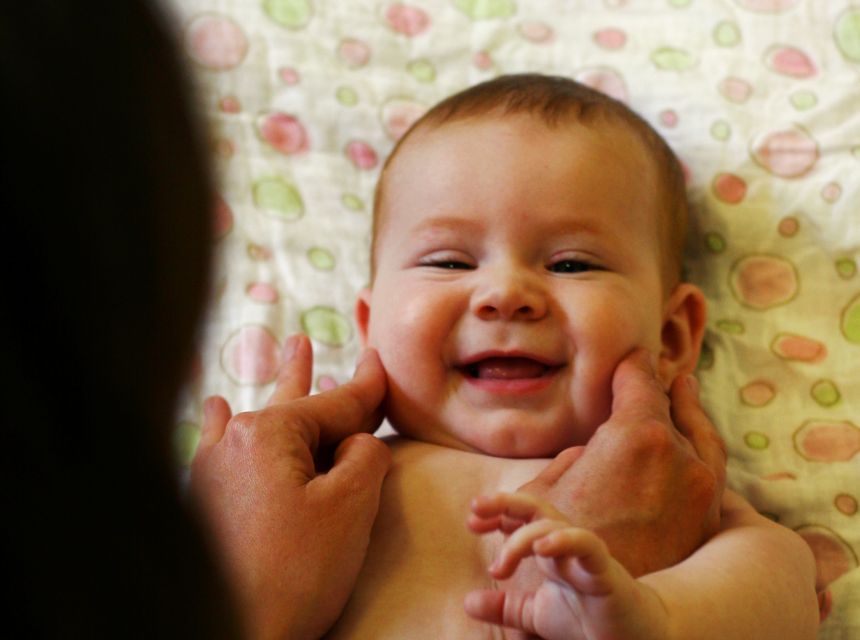
This course will equip you with the specific knowledge, skills and insights you need to deliver parent education programs in cue-based infant massage education to the national standards in delivering infant massage education to families.
You will be eligible to register with Baby in Mind as a parent educator, and to be licenced to deliver the First Touch Program to families.
The course covers a wide variety of content, and the course topics include:
Rethinking infant massage
History of infant massage in Australia
Mechanisms of high-quality infant massage education
Parent-infant communication
Talking with touch
The experience of touch
Relationship-based practice
Bonding and attachment
The authentic conversation
First Touch Program – 16 protocols and guidelines
Positioning and infant regulation
Environments to support parent-infant interactions
Supporting parent mindfulness
Oils
Infant massage routines – feet, legs, tummy, chest, arms, face, back
Gentle movements
Voice, singing, rhymes
Eye contact and facial expression
Massage for unsettled babies
Touch and the pre-term baby
Nesting and containment holds
Touch relaxation
Babies with additional needs
Adaptations for older children
The baby as teacher
Infant communication
Behavioural states
Infant cues, stress, reflexes and supporting parent sensitivity
Timing of massage
Infant crying, communication and emotion
Parent-baby group delivery
The Good Facilitator
Listening to the baby
Facilitating parent interactions
Reflection
Beginning as an educator
Engaging parents (or colleagues) in the First Touch Program
Planning promotion and marketing
Documentation
Code of Conduct
Legal issues
Professional Networking
By completion of your course, you will be able to:
1) Use a relationship-based approach to promoting parent-infant mental and physical health.
2) Facilitate parents’ capacity to sensitively communicate with their babies and to respond to their needs through massage, stroking, other forms of respectful touch, and other responsive interactions.
3) Provide and promote infant massage education in a professional manner.
4) Respond to the individual differences and diversity of families in the context of infant massage education.
Session times: Face-to-face component
The face-to-face workshop component of the cue-based infant massage training is held over four days.
The program is intensive and content-heavy, and for this reason we offer the course in a variety of formats. Some courses are held over four days back-to-back. Some of our courses are spread out course over five days, with a day off during the course.
Sessions are held from 9am – 5pm, though most courses finish slightly earlier, particularly on the last day.
We strongly suggest that during the training program, you do not schedule other activities as there will be a small amount of preparation and review you will need to undertake between each day.
Time commitment: Self-directed/ take-home activities.
Following the four-day face-to-face training, you will have a series of take-home assignments to complete. These can be completed in a way and at times that suit your lifestyle and other commitments.
As a general guide, you should allow 100 – 130 hours to complete these activities. You have four months to submit these activities for assessment. You may request an extension if you require it (please see our information about extensions for more detail).
If you have ever done any type of adult education course, you’ll know that most training providers ask for student feedback. They then keep the results of this feedback secret, in case it says anything bad. Most training providers avoid sharing any information that shows them in less than a positive light.
But Baby in Mind is very different.
We ask for student feedback and we publish the results of that feedback for everyone to see.
Why? Because we truly believe that as both a training provider and a Charity, it’s good practice to be open and honest with people about our work. We believe that being transparent and accountable to our students (and potential students) helps show that – even in the rare situation where we get something wrong – we always take seriously, listen to and follow-up on every bit of student feedback that we receive.
This is the Live Feed from our student feedback database, with some of the key performance indicators we use to evaluate our work and student satisfaction. These are the up-to-date, pure, unadulterated results of feedback and evaluations completed by our students.
Baby in Mind provides training for students who wish to undertake a nationally recognised qualification in infant massage education.
This is the only training organisation in Australia where you can undertake a nationally (government) recognised, vocational course in infant massage education.
Benefits of Nationally Recognised training:
- Your qualification meets the national competency standards in Delivering Infant Massage Education to Families.
- Your training will meet the needs of employers and community expectations because nationally recognised training is developed in consultation with industry, including early childhood and perinatal health services, community organisations, clinical experts and specialists, and large and small businesses in metro, rural and regional areas.
- Your training course provides you with the same standard of skills, knowledge and competencies regardless of your individual trainer, or where you do your training.
- On successful completion of your course, you receive a nationally recognised certificate and competency statement, issued in accordance with the national qualifications framework, which is more widely recognised and regarded in the workplace and community, and more easily integrated with other qualifications.
- The skills and knowledge you you gain through this course is transferable— your course is recognised in all states and territories of Australia.
- You may be eligible for supplementary financial assistance from Centrelink to undertake this course.
- The training provider (that’s us!) has to comply with strict standards regarding our practices in fees, assessment/ marking, handling student complaints and many other areas that can impact on your experience. Our compliance with these standards are regularly reviewed and audited by an external government assessor.
- You have an external organisation (the Australian Skills and Qualifications Authority) to talk to and who can help you, if we cannot resolve a complaint for you.
National accreditation is the system used by the Australian government to ensure people who undertake training courses graduate with the essential skills and knowledge needed to perform their jobs safely and effectively.
Deliver Infant Massage Education to Families is the name of the nationally accredited, industry endorsed competency standard for people teaching infant massage.
To become accredited, a course is first reviewed by industry experts to ensure it meets the current research and community needs. A course is then reviewed by the Australian Skills and Qualifications Authority (ASQA) to also ensure it meets government standards and requirements for vocational education and training.
Course details:
Course name: Short Course in Certified Infant Massage Instruction
Australian Qualification Code: 10001NAT
Relevant Competency Unit(s): 25IME001A Deliver Infant Massage Education to Families.
ANZSCO professional category: Health Promotion Officer (code: 251911).
Confirm our national accreditation at www.Training.gov.au
We are able to offer you a course with an organisation well-established in the community, with a high standard of ethics. Baby in Mind is a nationally registered Health Promotion Charity. To meet our Registered Training Organisation (RTO) requirements we partner with Relationships Australia SA (registration number 102358).
In addition to our National (government) Accreditation, this course is formally endorsed by the following professional associations for the continuing education of their members.
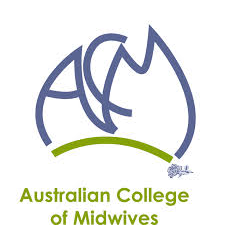
The Australian College of Midwives
Members of the Australian College of Midwives can claim 26 MidPLUS points for this course.
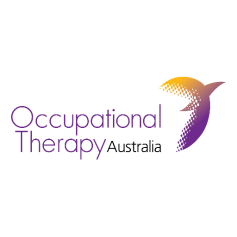
Occupational Therapy Australia
Members of Occupational Therapy Australia can claim 10 CPD points in category 6 for this course.
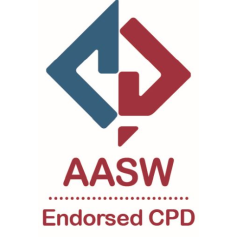
Australian Association of Social Workers
Members of the Australian Association of Social Workers can claim the time spent undertaking this course to meet their CPD requirements.
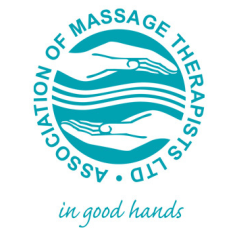
Association of Massage Therapists
Members of the Association of Massage Therapists can claim 35 CEUs per day of this course.
Members of other professional associations may also be able to count this course toward their CPD requirements, and a Certificate of Attendance will be issued on completion of the four-day training component.
Pre-Requisites
To be eligible to enrol in the cue-based infant massage education course, you will need to meet the following criteria:
Age:
To enrol in this course you must be a minimum of 18 years of age at the time your face-to-face training commences.
Qualifications:
To gain entry into this course you must either:
(a) Hold a qualification (and comply with any related professional registration requirements) in health, welfare, child development or a related field; OR
(b) Have relevant equivalent work or life experience in a role related to the care, health and well-being of infants, or health education and promotion. Life experience as a parent, grandparent or carer of children is sufficient equivalent experience for entry to this course.
Character:
To gain entry into this course you must also be of good character. This means that you must not hold any criminal convictions that would prevent you from working with children or other vulnerable people and you must be in good standing with any associations, registration bodies or other similar organisations with whom you are associated.
Assumed knowledge:
To successfully complete this course, you will need sufficient English literacy and numeracy skills.
You will also need to have a basic knowledge of the human body, sufficient to enable you to achieve the learning outcomes of this course.

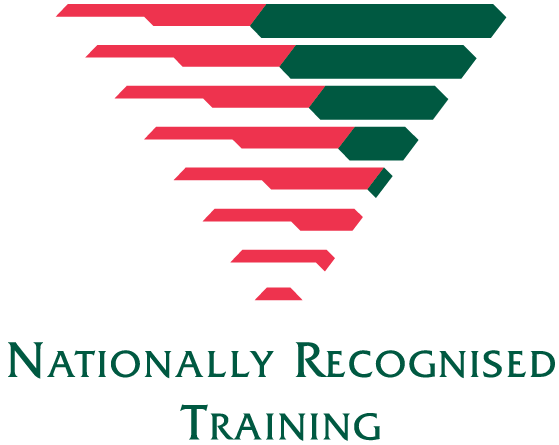

Recent Comments